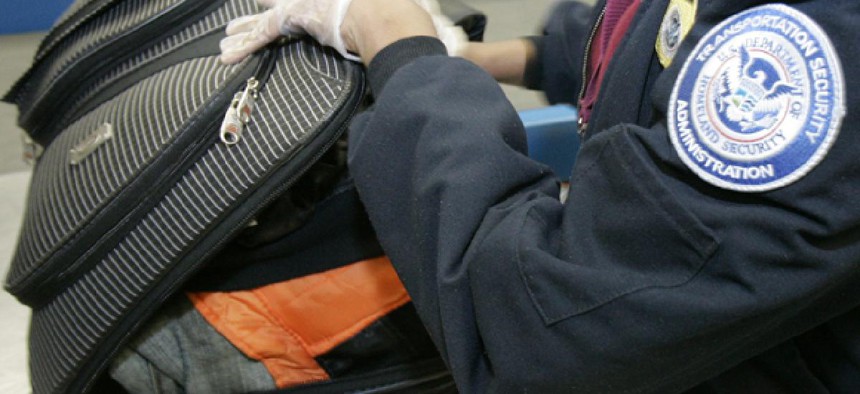No one wants to pay for TSA's new baggage screeners

Ric Feld/AP file photo
GAO finds lack of support around $50 billion security update.
Most of the country’s largest airports have yet to achieve the best mix of baggage screening technologies, and the Transportation Security Administration currently provides neither the funds nor the will to assist more, according to a new report.
The Government Accountability Office report released April 27 outlined the steps TSA has taken to implement its Electronic Baggage Screening Program, which began on Dec. 31, 2002. To achieve what GAO defines as an “optimal system” for passengers, an airport must have a mixture of in-line and stand-alone explosives detection systems that allow baggage to move through security as fast as possible.
The program could cost the public and private sectors nearly $50 billion by 2030, according to TSA.
While 76 percent of the 446 airports regulated for security nationwide have an optimal mix of baggage screening techniques, only 36 percent of the 28 largest regulated airports do, according to the report. Optimal systems are far more complicated for large airports, GAO said. Another factor is TSA decided in August 2011 to shift its innovation focus from installing more optimal baggage screening systems to replacing other aging security machines.
Currently, TSA has an agreement with airlines and airports to pay for 90 percent of optimal screening system installation projects, with the private sector picking up the remaining 10 percent. Though GAO suggests additional airports could be converted to optimal systems if the federal government took on more of the financial burden, there are many hurdles to such a plan amid budget constraints. TSA struggles to provide cost estimates because the expenses for such security modernizing operations are difficult to quantify, according to the report.
While TSA is reluctant to commit more money to optimal baggage screenings, airport management is not particularly interested in picking up the slack, the auditors found. Of 10 airports that GAO visited for the report, eight opposed investing more to improve security systems (with the other two declining comment), partially because airports would rather invest in revenue growers such as parking garages and more concessions. This is despite the fact that half the airport officials reported in-line screening systems reduce the number of lost or stolen bags, and nine of 10 said in-line screening reduces passenger congestion in terminals.
GAO recommended TSA generate more accurate cost estimates of screening technology life cycles. The Homeland Security Department agreed with the recommendation.
The goal of greater TSA efficiency is shared by current and former executives alike. In a speech Friday in Washington, former TSA chief Kip Hawley said the agency must think beyond its current “ossified systems” in favor of a more streamlined approach that would allow officers to use best judgment to act independently of standard operating procedure.
NEXT STORY: Communities crop up around Data.gov





